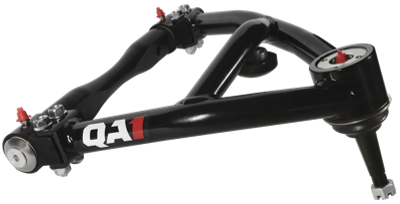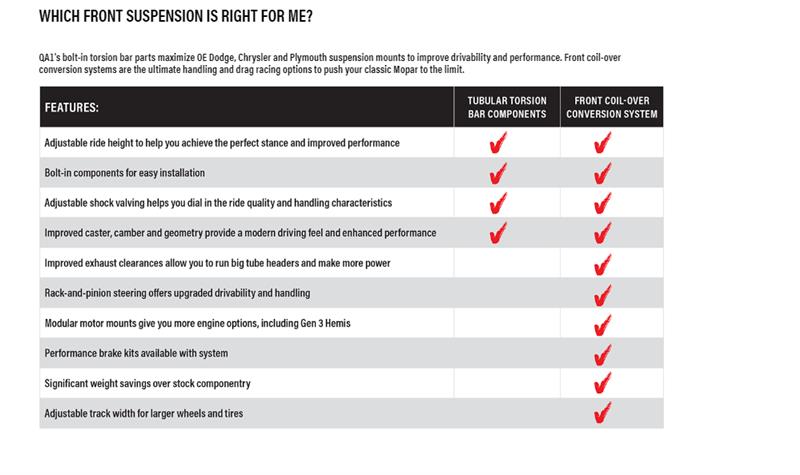Coil-Over vs Torsion Bar: Suspension Upgrades for Classic Mopars
Coil-Over vs Torsion Bar:
Suspension Upgrades for Classic Mopars
If you're a proud owner of a classic Mopar, you know that the car's torsion bar suspension is unique to this manufacturer. While torsion bars have their benefits, they are not as adjustable or customizable as modern coil-over systems. In this blog post, we'll explore the pros and cons of both Mopar torsion bar upgrades and coil-over systems to help you decide which option is right for you.
Classic Mopar Suspension
First, let's take a quick look at classic Mopar suspension. During the muscle car era, Mopar was one of the only manufacturers to use torsion bars instead of coil springs. Today, there are two ways to upgrade your classic Mopar's suspension: with a coil-over conversion system or by pairing new tubular components with Mopar's original torsion bars.
Coil-Over Conversion vs Torsion Bar Upgrade: Which is Right for You?
Coil-Overs
Let's start with the more radical transformation first: a coil-over conversion system. Swapping in a coil-over conversion system offers many benefits, including easier ride height adjustment, more adjustability for drag racing or autocross, and improved header clearance. You'll also get a much more modern design, including a Mustang II spindle for more readily available aftermarket brake options and rack and pinion steering for a much more modern feel. However, the upgrade must be done all at once, so if you think you might want to do a coil-over conversion down the road, it's best to do it right away before investing in components for your torsion bar suspension.
Torsion Bars
On the other hand, some guys want to stick with the torsion bar setup and stay truer to Mopar's original design. Upgrading your torsion bar components with tubular parts still offers significant performance gains and allows you to build your system over time. You'll get improved caster geometry for a more modern feel, and the tubular components are much stronger than OE stamped steel parts. You can also swap in new dynamic strut rods and shocks for an immediate difference in your ride. If you're willing to swap out the front end completely, you can also upgrade the K-member and control arms.
In Conclusion
Both Mopar torsion bar upgrades and coil-over systems have their pros and cons. If you want a more modern feel and increased adjustability, a coil-over conversion system might be the right choice for you. If you want to stay true to Mopar's original design and upgrade your system over time, upgrading your torsion bar components with tubular parts might be a better option. If you still have questions about which option is right for your application, give our tech line a call, or check out other tech articles on QA1.net for more helpful info and suspension tips.


